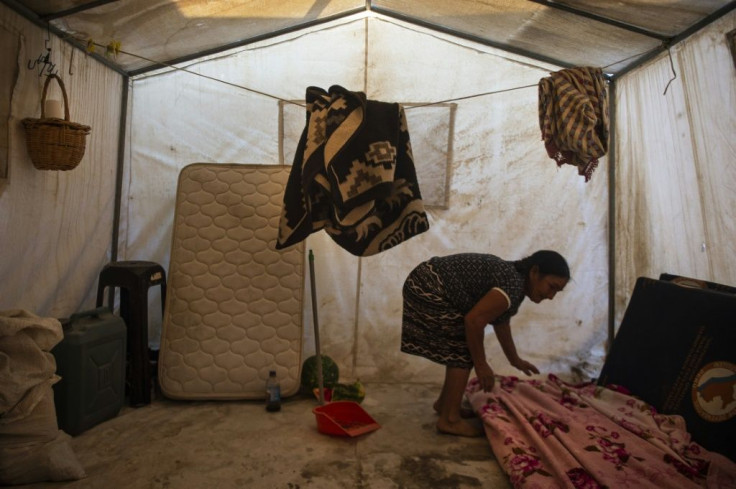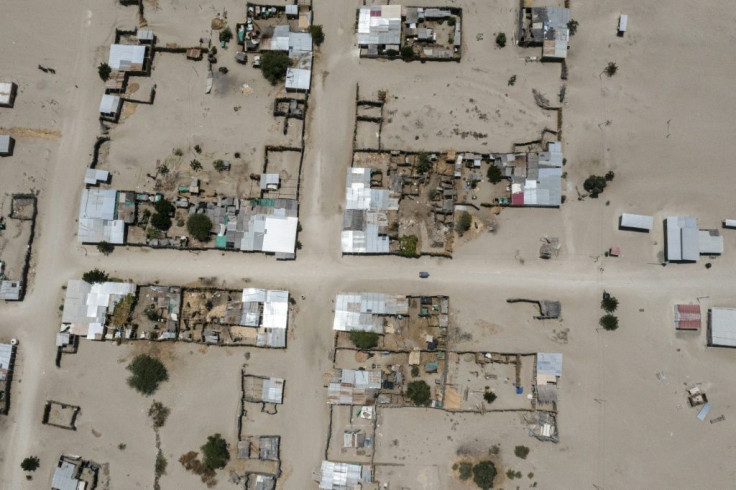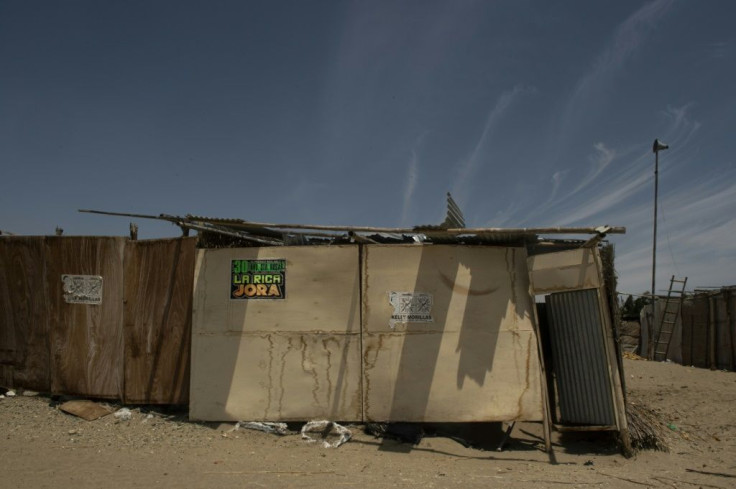'Never Thought We Would Live Like This' -- Despair For Peru Climate Casualties
Five years ago, Marilyn Cahuana saw her home and livelihood wash away as Peru endured a particularly brutal El Nino -- the cyclical weather phenomenon scientists say is being aggravated by climate change.
With her husband and three children, she went from a tranquil, self-sufficient life on a fertile river bank to a straw-topped hut next to a busy highway, with no access to potable water, sanitation, or electricity.
"It was like starting from nothing," the 36-year-old wept as she recounted her experience to AFP at the Santa Rosa camp some 1,000 kilometers (620 miles) north of Lima where hundreds of families displaced by the 2017 climate catastrophe were offered refuge.
"We had to buy everything anew, a bed, wardrobes, toilet... because the water took everything."
What was meant to be a temporary arrangement has lasted five years for about 2,000 families from villages and towns ravaged by the flooding and thrown together in a camp of ramshackle zinc and straw huts and tents.

"We have been completely forgotten by the state," said Cahuana's 40-year-old husband, Leopoldo Namuche, who scrapes together a living driving a motorcycle taxi.
The couple keeps few ducks, turkeys and pigs to eat, and Cahuana bakes biscuits to sell to neighbors.
She reminisces longingly of her former life as a small-scale farmer in the hamlet of Santa Rosa, about 20 km away, where they grew their own produce next to the Piura river and had a school, clinic, and other basic services nearby.
"We never thought we would live like this," added Namuche, his wife is pregnant with a fourth child to join Greysi, 12, Hans, nine, and two-year-old Gael.
"It is because of El Nino."

With a cycle of every few years, the weather system causes an abnormal warming of the Pacific ocean which in northern Peru translates into excessive rainfall, and drought in other parts of the country.
In 2017, during the warmest five-year period ever recorded on Earth, El Nino hit Peru with particular fierceness.
Torrential rains and floods claimed over 100 lives, and according to the International Organization for Migration (IOM) displaced some 300,000 people -- one percent of the country's 33 million population.
El Nino-related devastation is nothing new to Peru. In 1998, 500 people died, and in 1982-3 the toll was about 9,000 from flooding and subsequent disease outbreak.

Manuel Pulgar Vidal, a former Peruvian environment minister and now climate and energy leader at green group WWF, said evidence was accumulating "that these events... are more frequent and more severe due to climate change."
A 2019 research article published in the PNAS science journal said El Nino events, which hit countries around the equator hardest, have become stronger since the 1970s due to "a background warming in the western Pacific warm pool" -- a mass of high-temperature water where the weather system originates.
If this warming continued, the article warned, "more frequent extreme El Nino events will induce profound socioeconomic consequences."
A few kilometers from Santa Rosa is another refuge for climate migrants, named San Pablo. It houses about 600 families.
There are no shops, and residents rely on wells for water to drink and irrigate vegetable patches in a place where day temperatures can reach 35 degrees Celsius (95 Fahrenheit), with few trees to provide shade.
At night, temperatures plummet but the only fuel for cooking or heating is firewood. Only a few have access to solar panels or car batteries for lighting.
The nearest medical care is at Catacaos, some 30 minutes by car. Without electricity, there is no internet for the kids to follow classes online since the community school closed in March 2020 due to the pandemic.
"Here, we sleep about four people," said Carlos Javier Silupu Raimundo, pointing to a tiny plywood "room" with a mattress on a sand-and-stone floor.
"We have to be careful because there is always a danger; there could be a scorpion, a snake."
Another San Pablo resident, Esther Juarez Elias, appealed for better living conditions and support: "above all the light, light is the main thing we need."
Experts say climate change has boosted the number of internally displaced Peruvians.
"Such disaster displacement can take a high psychosocial toll on people who have lost their livelihoods and assets, including homes and other infrastructure," said a 2021 IOM report on Peru.
One in five people displaced by the 2017 event, it said, still had no access to water, and almost half had post-traumatic stress disorder.
"Displacement pressure will likely increase, considering projections of more intense rainfall events and related flooding, landslides and riverbank erosion, and more heatwaves in many parts of the country," said the IOM report.
© Copyright AFP 2024. All rights reserved.











